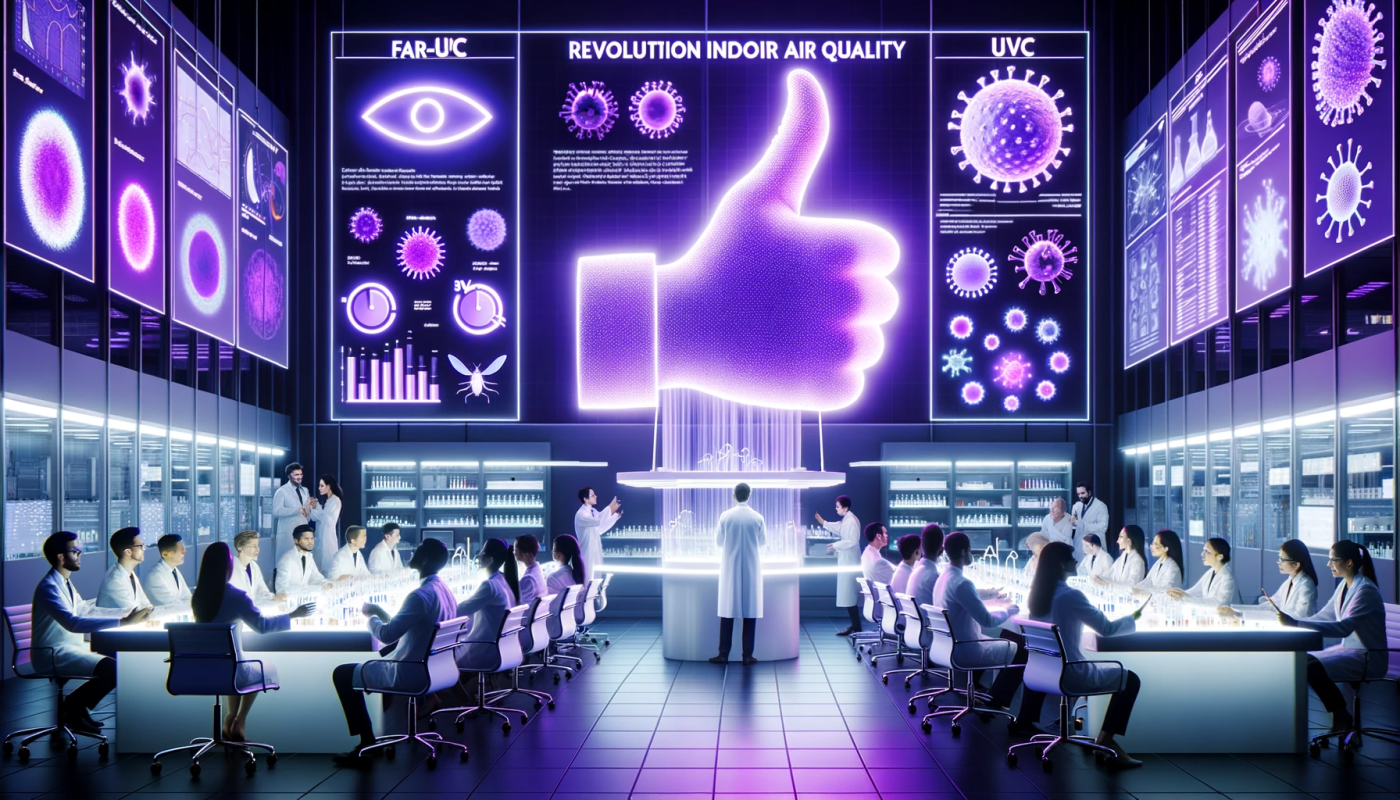Far-UVC Light, In the press, Latest Publications
Two Thumbs Up for Far-UVC Light: A Revolution in Indoor Air Quality
In the collective pursuit of enhancing indoor air quality, technology has proven to be an indispensable ally. The era of advancements is marked with myriad solutions aimed at bolstering environmental health and safety. Among the standout technologies, Far-UVC light emerges as a promising contender in our arsenal against airborne pathogens, offering optimism in a time when it’s needed the most.
The UVC Spectrum and Its Germicidal Might
UVC light, encapsulating wavelengths between 4 to 400 nanometers, has long been recognized for its profound germicidal properties. Historically, ultraviolet-C (UVC) light has demonstrated its might by swiftly neutralizing harmful microbes. However, a salient caveat was its potential detriment to human skin and eyes, which rendered conventional germicidal UVC lights unfit for direct use in occupied indoor spaces.
The Advent of Far-UVC Light
This is where the groundbreaking work of researchers from the Columbia University Vagelos College of Physicians and Surgeons, in collaboration with their UK counterparts, comes to the fore. Their investigations into far-UVC light, which possesses a relatively shorter wavelength than its germicidal UVC counterpart, offer renewed hope.
A series of previous studies had hinted at the diminished risk associated with far-UVC light, suggesting it lacks the detrimental health effects observed with conventional UVC lights.
Revolutionary Results
The empirical evidence supporting far-UVC light’s efficacy is indeed remarkable. Trials involving far-UVC lights integrated into ceiling fixtures witnessed a staggering 98% reduction in indoor airborne microbes in a mere span of five minutes. These experiments, set in a room-sized chamber with approximately three air changes per hour, saw a continuous influx of bacteria via aerosolized mist. However, the far-UVC lights consistently maintained minimal bacterial levels.
Perhaps the most notable distinction of this technology is its ability to facilitate an astounding 184 equivalent air exchanges per hour. In contrast, alternative methods typically cap at 5 to 20 exchanges within the same duration.
The Future is Bright, and It’s Far-UVC
Amidst the backdrop of global health crises, like pandemics and flu outbreaks, solutions that offer adaptability and efficiency are paramount. The researchers’ exploration into far-UVC light brings forth a versatile tool, one that could remain robust even in the face of emerging COVID-19 variants.
As we transition into an era where indoor air quality becomes synonymous with health and safety, far-UVC light positions itself as a beacon of hope. It’s not just about mitigating present challenges but preempting future ones, ensuring our shared spaces remain sanctuaries of health and well-being.
For those keen on delving deeper into the scientific intricacies and data, the original post on EnergyCentral provides a comprehensive look at this groundbreaking research.

